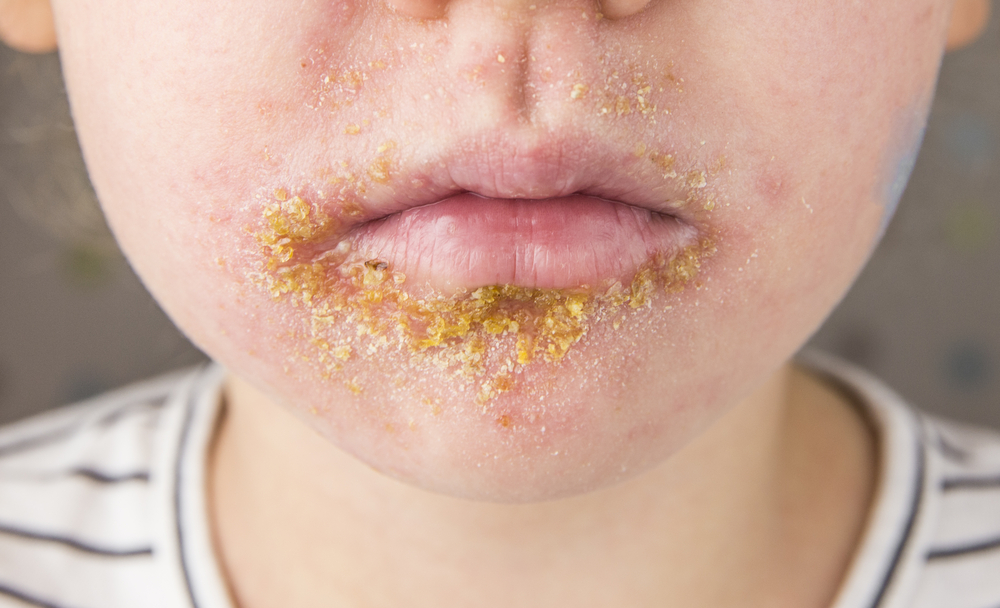Impetigo is a common minor skin infection caused by staph. aureus.
Impetigo is a common and highly contagious bacterial skin infection. It primarily affects children, but it can also occur in adults. Impetigo is caused by bacteria, most commonly Staphylococcus aureus or Streptococcus pyogenes.
Key points about impetigo:
- Types of Impetigo: There are two main types of impetigo:a) Non-bullous impetigo: This is the most common form, characterized by red sores or blisters that rupture and develop a honey-colored crust.b) Bullous impetigo: This less common form involves larger blisters that are filled with clear fluid. The blisters can be fragile and easily rupture, leaving behind a thin, yellowish crust.
- Transmission: Impetigo is highly contagious and can spread through direct contact with an infected person or by touching contaminated objects, such as towels, clothing, or toys. Scratching the affected areas can also spread the infection to other parts of the body.
- Symptoms: The symptoms of impetigo may include:
- Small red sores or blisters that may be itchy
- Sores that burst and ooze fluid or pus
- Formation of a honey-colored or yellowish crust
- Swollen lymph nodes in the affected area
- Diagnosis and Treatment: A healthcare professional can typically diagnose impetigo by examining the affected skin. In some cases, they may take a swab of the affected area for laboratory testing to determine the specific bacteria causing the infection. Treatment usually involves:
- Topical Antibiotics: For mild cases, an antibiotic ointment or cream applied directly to the affected skin can help clear the infection.
- Oral Antibiotics: In more severe or widespread cases, oral antibiotics may be prescribed to eliminate the infection.
- Prevention: To prevent the spread of impetigo, it is important to practice good hygiene, such as:
- Washing hands frequently with soap and water.
- Avoiding close contact with infected individuals.
- Not sharing personal items like towels, clothing, or razors.
- Keeping the affected areas clean and covered with sterile dressings.

